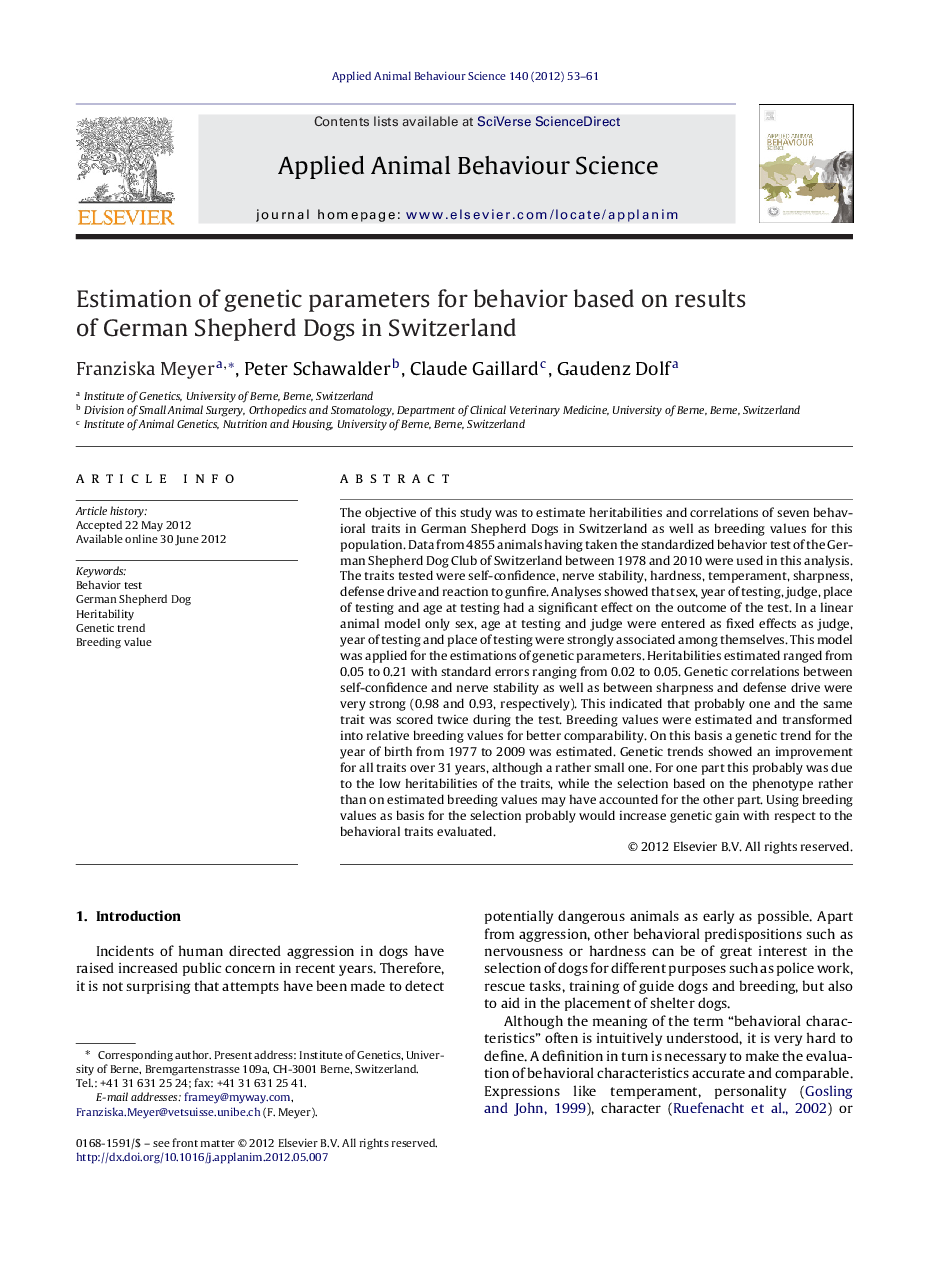| کد مقاله | کد نشریه | سال انتشار | مقاله انگلیسی | نسخه تمام متن |
|---|---|---|---|---|
| 4522913 | 1625373 | 2012 | 9 صفحه PDF | دانلود رایگان |
عنوان انگلیسی مقاله ISI
Estimation of genetic parameters for behavior based on results of German Shepherd Dogs in Switzerland
دانلود مقاله + سفارش ترجمه
دانلود مقاله ISI انگلیسی
رایگان برای ایرانیان
کلمات کلیدی
موضوعات مرتبط
علوم زیستی و بیوفناوری
علوم کشاورزی و بیولوژیک
علوم دامی و جانورشناسی
پیش نمایش صفحه اول مقاله

چکیده انگلیسی
The objective of this study was to estimate heritabilities and correlations of seven behavioral traits in German Shepherd Dogs in Switzerland as well as breeding values for this population. Data from 4855 animals having taken the standardized behavior test of the German Shepherd Dog Club of Switzerland between 1978 and 2010 were used in this analysis. The traits tested were self-confidence, nerve stability, hardness, temperament, sharpness, defense drive and reaction to gunfire. Analyses showed that sex, year of testing, judge, place of testing and age at testing had a significant effect on the outcome of the test. In a linear animal model only sex, age at testing and judge were entered as fixed effects as judge, year of testing and place of testing were strongly associated among themselves. This model was applied for the estimations of genetic parameters. Heritabilities estimated ranged from 0.05 to 0.21 with standard errors ranging from 0.02 to 0.05. Genetic correlations between self-confidence and nerve stability as well as between sharpness and defense drive were very strong (0.98 and 0.93, respectively). This indicated that probably one and the same trait was scored twice during the test. Breeding values were estimated and transformed into relative breeding values for better comparability. On this basis a genetic trend for the year of birth from 1977 to 2009 was estimated. Genetic trends showed an improvement for all traits over 31 years, although a rather small one. For one part this probably was due to the low heritabilities of the traits, while the selection based on the phenotype rather than on estimated breeding values may have accounted for the other part. Using breeding values as basis for the selection probably would increase genetic gain with respect to the behavioral traits evaluated.
ناشر
Database: Elsevier - ScienceDirect (ساینس دایرکت)
Journal: Applied Animal Behaviour Science - Volume 140, Issues 1â2, August 2012, Pages 53-61
Journal: Applied Animal Behaviour Science - Volume 140, Issues 1â2, August 2012, Pages 53-61
نویسندگان
Franziska Meyer, Peter Schawalder, Claude Gaillard, Gaudenz Dolf,